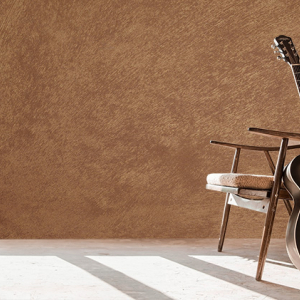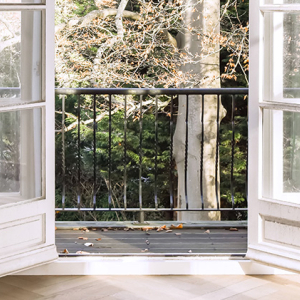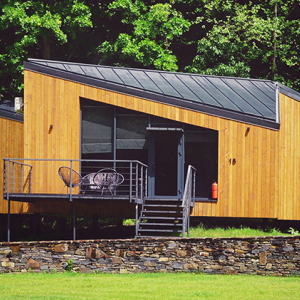
Rehabilitation of a facade due to the growth of mould and algae
Mould, algae, lichens and other microorganisms often grow on facade surfaces.
Moisture provides the necessary conditions for microorganisms to appear. Uninsulated and heated buildings let in much more heat, which reduces the facade’s humidity. In some cases, microorganisms appear only after additional insulation or a thermal insulation system have been installed; this of course is not a reason to avoid insulation. A professionally installed thermal insulation system offers many advantages and contributes to a better living environment.
The growth of microorganisms on a facade is influenced by several factors: the immediate surroundings of the building and presence of vegetation and water or moisture, overhead protection of the facade e.g. with a canopy, proper drainage, and sun exposure. The structure and absorbency of the final facade layer also have an important effect. A rougher surface provides algae with more food and better adhesion, while a more absorbent surface retains moisture for a longer time, which creates the conditions necessary for the growth of microorganisms.

Even when all sides of a building’s facade are made of the same material, there can be more intensive growth of algae and mould due to differences in humidity and temperature. The most vulnerable parts of a facade are the windy and northern sides, areas in the shade, and plinths. The growth of algae and mould on a facade is a sign of excessive humidity in the facade system. For the rehabilitation, it is therefore important to choose a material that prevents water stagnation as much as possible.
Rehabilitation of algae and mould on a facade
Any microorganisms on the facade must first be destroyed. At the beginning of the procedure, infected surfaces should not be cleaned mechanically by scrubbing or scraping, because the mould spores are still alive and this could spread the infection to healthy surfaces.

Facade surfaces attacked by mould or algae should first be treated by applying a single coat of diluted SPEKTRA Sanitol biocide agent using a paintbrush or roller, or alternatively sprayed on the surface with a low-pressure sprayer.

During the procedure, we recommend using protective gloves and, if spraying, also eye and respiratory protection. The biocidal product can be diluted with water to a ratio of 1:4, depending on the degree of contamination. For surfaces that are severely contaminated, you can repeat the procedure or use an undiluted product.
SPEKTRA Sanitol will penetrate deep into the substrate, destroying mould spores that are spreading to its deeper levels. The surface usually only shows a part of the infection. When the surface is dry (after 12 hours) the mould, algae and loose particles should be mechanically removed with a soft brush or, preferably, hot water or steam under low pressure. Be careful not to damage the facade plaster.

A surface prepared and dried like this is suitable for further rehabilitation, as required (filling cracks, repairing mechanical damage…). Finish the process by restoring the facade with appropriate paint that reduces the level of moisture in the top layer and, if necessary, repairs microfissures.
To improve the grip of the substrate and even out its absorbency, first paint the surface with the SPEKTRA Acrylic Impregnation primer or SPEKTRA Impregnation Acryl Special, followed by 2 coats of the selected facade paint of the preferred hue. We recommend any facade paint that already contains biocidal protection of the colour film and enables high water repellency, to prevent stagnation of moisture on the facade.
Properties of facade paints for rehabilitation
| SPEKTRA RENOXAN | SPEKTRA TOP DRY | SPEKTRA FACADE UNIVERSAL | SPEKTRA FACADE SILICONE | |
| Type of binder | dispersion and silicon binder | dispersion binder | dispersion binder | dispersion and silicon binder |
| Water absorption | ++++ (W3 - low) |
+++++ (W3 - low) |
+++ (W3 - low) |
++++ (W3 - low) |
| Biocide protection | yes | yes | yes | yes |
| Vapour permeability | V1 - high | V2 - medium | V2 - medium | V1 - high |
| Micro-reinforcement | yes | no | yes | no |
| Weather resistance | ++++ | +++++ | ++++ | ++++ |
| Tone selection | HGMIX | HGMIX | HGMIX | HGMIX |
KEY:
+++++ excellent
++++ very good
+++ good




